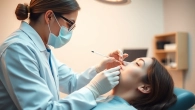
Understanding Testosterone Replacement Therapy: Benefits, Risks, and Considerations
What is Testosterone Replacement Therapy?
Definition and Purpose of Testosterone Replacement Therapy
Testosterone Replacement Therapy (TRT) is a recognized medical treatment designed to restore testosterone levels in individuals diagnosed with clinically low testosterone, also known as hypogonadism. This condition can result from various physiological issues, including age-related decline, injury, or underlying health conditions. TRT is typically administered through various methods such as injections, patches, gels, or pellets, each designed to maintain optimal testosterone levels while minimizing side effects. The main purpose of TRT is to alleviate symptoms associated with low testosterone, facilitating a better quality of life and improved physiological function.
Common Symptoms Leading to Consideration for Testosterone Replacement Therapy
Individuals experiencing symptoms of low testosterone may consider TRT when facing challenges that significantly impact daily life. Symptoms often include:
- Fatigue and decreased energy levels
- Reduced libido and sexual dysfunction
- Loss of muscle mass and strength
- Increased body fat
- Emotional changes such as depression, anxiety, or irritability
- Cognitive dysfunction, including difficulties with memory or concentration
Recognizing these symptoms is pivotal in addressing hormonal imbalances and considering appropriate intervention like Testosterone Replacement Therapy.
Types of Testosterone Replacement Therapy Available
Testosterone Replacement Therapy can be delivered through several modalities, each offering distinct advantages:
- Injections: Administered intramuscularly or subcutaneously, this method allows for rapid absorption and effects. Injections can be given weekly or biweekly, depending on the formulation.
- Patches: These are applied to the skin, providing a steady absorption of testosterone throughout the day. Patches are typically replaced daily.
- Gels: Transdermal gels are applied to the skin, allowing testosterone to enter the bloodstream directly. These gels are convenient and usually require daily application.
- Pellets: Small pellets are implanted subcutaneously and release testosterone over time. This option can last three to six months, allowing for fewer medical visits.
Choosing the right form of TRT is essential and should be based on individual preference, medical history, and physician recommendations.
Benefits of Testosterone Replacement Therapy
Physical Enhancements: Muscle Mass and Strength
One of the most significant benefits of Testosterone Replacement Therapy is the reversal of muscle wasting associated with low testosterone. Testosterone plays a crucial role in muscle protein synthesis, thus enhancing muscle mass and strength. Studies have consistently shown that men on TRT experience notable increases in lean muscle mass and substantial improvements in strength. This not only benefits physical appearance but also enhances physical performance and stamina, critical factors in maintaining an active lifestyle.
Improved Mood and Cognitive Functioning
Low testosterone levels are often linked to mood disorders, including depression and anxiety. TRT has been shown to alleviate these symptoms, leading to an improved sense of well-being. Many individuals report a significant boost in mood, increased motivation, and reduced feelings of fatigue. Cognitive functioning can also benefit; testosterone has been found to enhance memory and cognitive clarity, enabling better decision-making and focus.
Increased Libido and Sexual Performance
For many individuals, low testosterone can result in a marked decline in libido and sexual performance. Symptoms such as erectile dysfunction or reduced sexual desire can be distressing. Testosterone Replacement Therapy offers a solution, often leading to a substantial revival of sexual desire and increased sexual performance. Many patients report significant improvement in their sexual health and vitality, contributing to stronger relationships and enhanced quality of life.
Risks and Side Effects of Testosterone Replacement Therapy
Common Side Effects and Their Management
While TRT can provide significant benefits, it is not without potential side effects. Some common side effects include:
- Acne or oily skin
- Sleep apnea
- Fluid retention and swelling
- Increased red blood cell count
- Hair loss
Management of these side effects often involves adjusting dosage levels or switching the administration method. Regular monitoring through blood tests allows healthcare providers to mitigate these adverse effects effectively.
Long-Term Health Risks Associated with Testosterone Replacement Therapy
Long-term health risks of TRT have been subject to extensive research, leading to varied conclusions. Potential risks may include:
- Increased risk of prostate enlargement and potentially prostate cancer
- Cardiovascular issues, particularly in those with pre-existing conditions
Conclusive data is still evolving, hence it is essential for patients to work closely with their healthcare providers to weigh the benefits against potential risks based on their individual health profiles.
Understanding Individual Responses to Therapy
Not all individuals respond the same to TRT, and effects can vary widely based on factors like age, underlying health conditions, and lifestyle. Some individuals may experience significant improvements, while others may see minimal changes. Personalization of therapy is necessary, including regular follow-ups to evaluate the effectiveness and adjust treatments as needed. It is crucial for patients to communicate openly with their healthcare provider about their experiences and any adjustments needed for optimal health outcomes.
Who Should Consider Testosterone Replacement Therapy?
Clinical Guidelines for Initiating Testosterone Replacement Therapy
Testosterone Replacement Therapy is generally recommended for individuals diagnosed with hypogonadism who exhibit clinical symptoms associated with low testosterone levels. Healthcare professionals typically employ the following criteria before initiating treatment:
- Confirmation of low testosterone levels through blood tests (two separate tests)
- Presence of symptomatic complaints that significantly impact quality of life
- Assessment of potential health risks associated with treatment
Following these guidelines helps ensure that treatment is appropriate and beneficial for patients.
Assessment and Monitoring Procedures
Regular assessment and monitoring are essential aspects of managing TRT. Initial evaluations may include comprehensive physical examinations, hormone level testing, and screening for related health issues. Once therapy begins, patients should undergo:
- Follow-up blood tests to monitor testosterone levels
- Regular assessment of prostate health
- Monitoring for potential side effects and evaluating overall wellbeing
These procedures ensure that the therapy maintains efficacy while minimizing risks.
Alternative Solutions to Testosterone Replacement Therapy
For individuals who may not be candidates for TRT or prefer to explore alternative solutions, lifestyle modifications can be beneficial. These may include:
- Regular exercise, particularly strength training
- A balanced diet rich in nutrients that support hormonal balance
- Sufficient sleep and stress management practices
- Natural supplements such as zinc, vitamin D, and DHEA (consulting with health professionals before use)
Implementing these changes can potentially boost testosterone levels naturally and improve overall health.
Living with Testosterone Replacement Therapy
Adjusting Lifestyle and Nutrition During Treatment
Engaging in a healthy lifestyle during TRT is crucial for maximizing benefits. Nutritional adjustments that support hormonal health include:
- Integrating healthy fats, which play a role in hormone production (e.g., avocados, nuts, and olive oil)
- Consuming adequate protein to support muscle synthesis
- Staying hydrated and including fresh fruits and vegetables for vital nutrients
Additionally, maintaining an active lifestyle through regular exercise enhances muscle mass and aids in weight management, amplifying the benefits of TRT and overall wellness.
Importance of Regular Check-Ups and Monitoring
Consistency in follow-up appointments and monitoring is vital for individuals undergoing TRT. Regular check-ups ensure hormone levels are balanced and help identify any potential side effects or health issues early on. These appointments typically include blood tests to assess testosterone levels, prostate-specific antigen (PSA) testing for prostate health, and evaluations of overall body composition and mood stability.
Patient Experiences and Testimonials on Testosterone Replacement Therapy
Many patients who have undergone Testosterone Replacement Therapy report significant improvements in their quality of life and well-being. Success stories often highlight enhanced energy levels, improved sexual health, better mood regulation, and increased strength. However, each individual’s experience varies, emphasizing the importance of personalized care and thorough communication with healthcare providers throughout the therapy process.












Leave a Reply